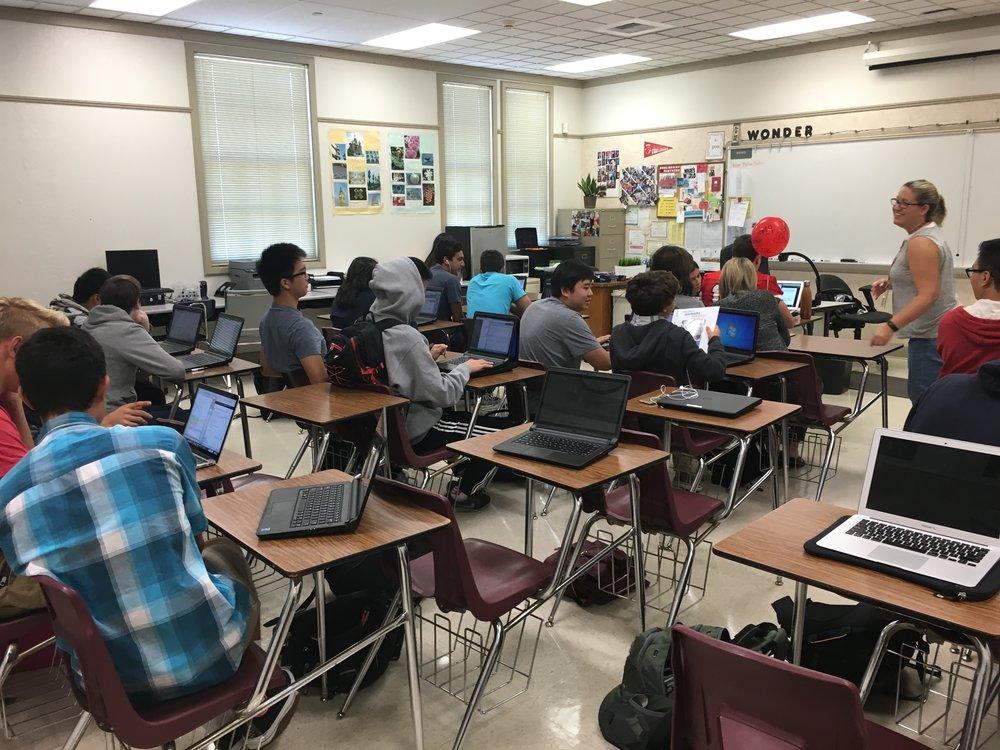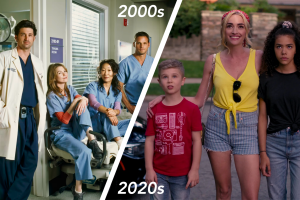Computer science classes prepare students for tech industry
October 3, 2016
Students’ interest in computer science is on the rise. When senior Erin Woo decided to learn computer science last year on her own, she found the first steps quite intimidating. However, she knew that the answer was within grasp and that thinking the word ‘impossible’ was not going to cut it. Woo persisted and also joined Girls Who Code to get additional help. When she got the skills she needed, she participated in hackathons.

“It takes a kind of mindset to really get into coding but when you get in the zone, you’re basically unstoppable,” Woo said. “It helped knowing that I wasn’t alone and that a lot of people were there to help me.”
This year, she is one of the seventy people taking AP Computer Science at Burlingame High School. Like her, a sizeable amount of students has had some kind of coding experience, either by taking the Principles of Computer Science class at BHS the previous year or self-studying. A few students have decided to go for the challenge with no background knowledge at all.
“The fact that it’s new to me makes it fun,” senior Cole Romero said. “I’ve learned that if you want to get into coding, you have to be patient and prepared for a lot of discipline. The more you do it, the easier it gets and the more you get used to certain habits.”
As the demand for computer engineers skyrockets, BHS has made notable strides to open computer science classes to all students. For those wanting to start off at a more manageable pace, the introductory course Principles of Computer Science, added last year, sets the foundations for problem solving and algorithm development through the beginner-friendly languages SNAP! and Python. Students not only learn from our own computer science teacher Christina Wade, but also from skilled professionals in the tech industry through Technology Education and Literacy in Schools (TEALS). This year’s TEALS teachers include Mike Morearty, who has been a software developer for 28 years and has worked for Microsoft, Adobe, and Asana, as well as Hannah Thompson, a current talent recruiter at Bina Technologies and a former software engineer at Yahoo.
For those willing to take the difficulty up a notch, BHS offers AP Computer Science. Students learn Java, an object-oriented programming language that is popular with programmers today and powers Google’s Android operating system. This class has an Algebra 2 prerequisite.
Wade and Aragon High School teacher Lisa Kossiver launched the district’s computer science program in 2013 and were the first to teach the courses in the district. Wade, who is now in her fourth year of teaching computer science, offered BHS students an opportunity to start early in the field.
“I couldn’t believe that we didn’t offer CS to students at a great school like BHS, especially being so close to Silicon Valley,” Wade said. “I also wanted more students to consider STEM majors in college, so exposing them to CS in high school was an important part of this goal.”
Learning how to code at a young age not only prepares students for the tech industry but also trains critical thinking. One must understand the function of each line of code, strive to be concise and cogent, and think through mistakes.
“Computers are an integral part of our daily lives, so learning how to use them, as well as code is a basic skill such as reading, writing, and math,” Wade said. “Being exposed to coding helps students think logically and creates opportunities for them to learn other skills that can help them in college and in the workplace.”
Computer science generally requires an in-depth knowledge of math. However, according to code.org, coding itself often does not require people to know more than the basics – addition, subtraction, multiplication, and division. Rather, coding is a test of grit, logic, and using creativity to discover the most direct path to problem-solving.
“I’m no genius and math is definitely not my forte,” Woo said. “Coding is all logic. How well you can code depends more on your personality and work ethic rather than your given intelligence. Being a good coder takes a lot of creativity and flexibility, and most of the time you’re working with other people which makes it really fun.”
Both Wade and her computer science students advise that everyone should learn how to code, whether self-learning, enrolling in a class, or joining a club like Girls Who Code.
“Give coding a try! If you like it, keep learning and consider CS as a career,” Wade said. “There are so many jobs that are creative, fun and rewarding that involve coding in some way.”








































